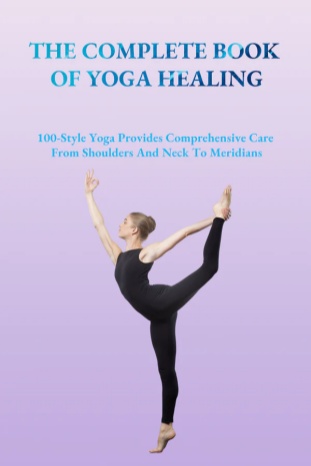The Heart of Zen Practice: Cultivating Bodhicitta
Cultivating Bodhicitta
The goal of Zen practice is none other than awakening and Buddhahood. But how does one attain enlightenment? It is not merely about having right knowledge, right views, and correct methods. One must also possess a sound personality and a stable mind.
Beyond the time spent on the meditation cushion, true cultivation must engage with life itself. To practice Zen is to cultivate the mind amidst circumstances and challenges. When confronted by external situations, if you can still maintain purity of heart and equanimity without being swayed, and even further develop wisdom and merit, then that is true progress in your practice.
A healthy personality arises from the cultivation of bodhicitta—the aspiration to attain Buddhahood for the sake of all beings. To practice Zen, one must let go of self-centeredness and embrace the vow: “I seek no comfort for myself, only that all beings be free from suffering.” To help others before having crossed oneself is the starting point of the Bodhisattva path.
As afflictions fade, bodhicitta deepens. The possibility of awakening becomes closer. The starting point of this path is the Four Great Vows:
- I vow to deliver innumerable sentient beings,
- I vow to cut off endless afflictions,
- I vow to master limitless approaches to Dharma,
- I vow to attain Supreme Buddhahood.
To liberate others through the Dharma is to expand compassion; to eliminate afflictions with the Dharma is to deepen wisdom. When compassion and wisdom function together, one attains the complete fulfillment of merit and insight—perfect enlightenment.

The Right Balance
Diligent practice in Zen requires balance—not too loose to become lazy, nor too tight to create fatigue. When the body is tired or the mind is scattered, it’s acceptable to take a short break—perhaps a few minutes, or the time it takes for an incense stick to burn. After resting, resume with fresh energy.
Zen practice can also be approached like a game. As when children play hide-and-seek, the more difficult it is to find the hider, the more exciting the game. If you treat practice with this kind of playful curiosity, it won’t feel like a chore.
There are two metaphors in Zen for ineffective practice:
- “Rowing a boat while fixed to a post on land”—no matter how hard you row, you’ll never move.
- “Soaking a stone in cold water”—still and seemingly peaceful, but without genuine effort or transformation.
True practice is not escaping into stillness, but integrating stillness and activity. When external noise cannot disturb your inner peace, then you’ve begun to truly progress.
Consistent and Wholehearted Effort
Beginners often struggle between relaxing too much—leading to distraction or sleepiness—and striving too hard—leading to tension and fatigue. The true practitioner maintains a light and relaxed body-mind while sustaining determined effort.
Practice should flow like water—unhurried yet unceasing. When working with a method such as huatou or breath awareness, don’t apply physical force or mental strain. Let your attention be steady yet soft, listening inwardly to the “silent question” within.
Your body, speech, and mind should be aligned: when sitting, just sit; when eating, just eat; when speaking, just speak. Zen is not about multitasking but about being completely present with whatever you are doing.
Even in meditation, don’t visually fixate on the breath or strain to hear it. Use your mind’s eye to sense it. Otherwise, you may experience tension in the head or ringing in the ears.
? Recommended Reading: If you wish to deepen your understanding of Zen practice, we highly recommend Master Sheng Yen’s The Fundamental Practice of Zen Meditation (Zazen)—a clear and powerful guide to sitting meditation and awakening the mind.
A Moment, A Lifetime—Freedom of Mind
As the Third Patriarch Sengcan said in the Faith in Mind, “One thought is ten thousand years.”
The Avatamsaka Sutra and Surangama Sutra state: “All Buddhas of the past, present, and future turn the great Dharma wheel on the tip of a single hair.”
The vastness of space and time is not fixed, but shaped by one’s mind. If you can relinquish clinging and discrimination—”gain and loss, right and wrong, all let go in an instant”—you will experience that in a single moment you encompass eternity, and on the tip of a needle, the entire cosmos.
It may sound abstract, but don’t be discouraged. Awakening is never far—it’s a shift that can happen in a breath. Like trying to remember where you left your keys: the more you force it, the further it seems. But the moment you let go, you see it’s right before you.
There is a story of a monk who, in meditation, suddenly thought his nose had disappeared. He panicked and searched everywhere, only to bump into a wall and feel the pain on his nose—”Ah, there it is!” In that instant, he awakened.
When the mind is no longer attached to grasping and comparing, when one thought does not give rise to the next—this is “no-mind,” the original face before birth, no different from the Buddhas of all times.
This mind is the nirvanic mind, the pure Dharma body, the true nature. It is both empty and full, free from leakage, and the source of great wisdom.
How do we attain such a mind? As the Sutra of the Buddha’s Last Teaching says:
“Therefore, you should diligently tame your mind.” “The mind is more fearsome than a venomous snake or wild beast.” “If unrestrained, it destroys all goodness. If well-controlled, nothing is unachievable.”
To bring scattered thoughts into focus, settle the mind on a method. From concentration arises clarity. And from clarity, you release all clinging. Then, your mind is truly free.
Discussion Prompt: What are the greatest challenges you face in maintaining balance and focus in your meditation practice? Have you experienced moments of deep clarity or insight? Share your thoughts and reflections in the comments.
? Recommended Reading: If you wish to deepen your understanding of Zen practice, we highly recommend Master Sheng Yen’s The Fundamental Practice of Zen Meditation (Zazen)—a clear and powerful guide to sitting meditation and awakening the mind.
Recommended Reads to Nourish the Soul:
Exercise for Seniors: Daily exercise to build balance and boost confidence, yoga aspect
21 Easy Three-Step Dinner Recipes for Weight Loss: Helping You Lose Weight Effectively
Yoga Healing: 100-Style Yoga Provides Comprehensive Care From Shoulders And Neck To Meridians
Keep exploring more inspiring content to enrich your mind and spark new insights:
- When a woman truly awakens, even destiny must give way.
- Eight Habits You Must Change in Interpersonal Communication
- How Meditation Can Help Alleviate Tension in Close Relationships
- Let Go of Their Lessons, Walk Your Own Path
- Top Meditation Techniques for Better Sleep
- The Five Types of Negative Energy in Parents That Weigh Most Heavily on Their Children
- How Can We Keep All Relationships at Their Best?
- Understanding the Benefits of Journaling for Emotional Health
- Creating a Relaxation Space at Home: Tips and Ideas







